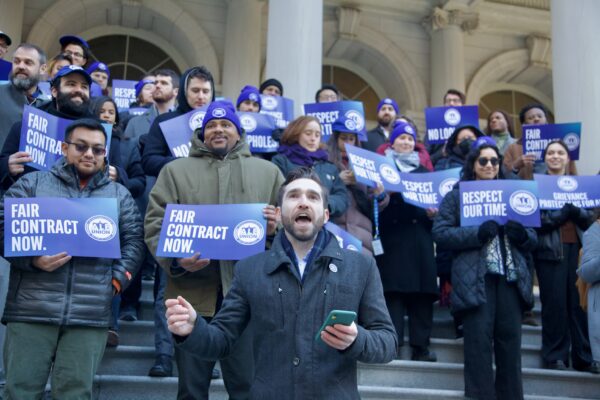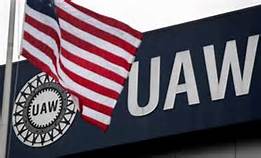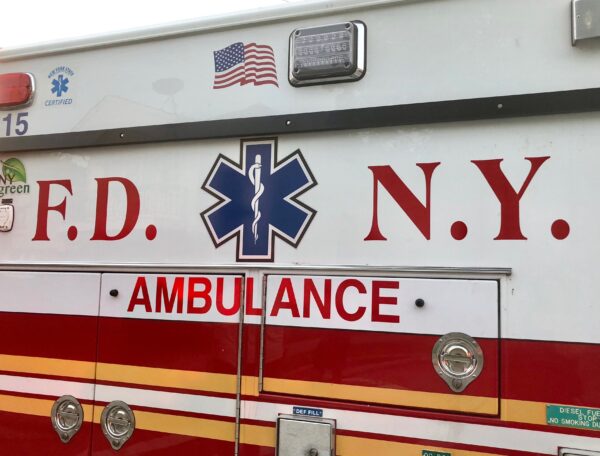May 19, 2015
New York, NY—It may have to, according to a panel of transportation experts that gathered in Lower Manhattan recently to figure out how is the region going to finance new trans-Hudson capacity to replace an aging, 104-year old rail tunnel between New York and New Jersey.
Dubbed the Trans-Hudson Summit (www.transhudsonsummit.com), officials from Amtrak, the Port Authority and the private sector convened for four sessions to discuss the urgency for a new rail tunnel and how to pay for it. Calls from civic leaders, some politicians and transportation advocates and experts are growing for either the federal government or the Port Authority to fund it.
Indeed, in a video interview with LaborPress in March, N.J. Senate President Steve Sweeney reiterated his call for the Port Authority to sell off some of its non-transportation real estate assets to secure the funds.
Participants in one of the sessions debated what types of financing solutions are available. Rohit Aggarwala, principal at Bloomberg Associates, moderated the session and he said that the undersecretary of transportation at the U.S. Department of Transportation’s, Peter Rogoff, remarks that the federal government will not pay for the lion’s share of the project make clear that the region has to find alternative financing.
That’s when two private sector investors offered up how the region and/or the Port Authority can attract private capital to build urgent infrastructure.
Chris Ireland, director of infrastructure investments at the Ontario Teachers’ Pension Plan, bluntly said the first place for the Port Authority to start is to put up assets for sale.
“If you’re looking for private equity investors or infrastructure investors to come in there needs to be something that’s for sale first of all. We need to [see] that there’ll be a sale process; that the government is going to sell an interest and there’s going to be a revenue stream that we can evaluate and take a return on that. Beyond that, we can establish our own views on how that asset or revenue stream is going to perform. That’s the first step—figure out where is the revenue going to come from over time and what’s our relationship going to be with that asset in that region,” said Ireland.
According to Ireland, the Ontario Teachers Pension Plan has C$150 billion under management and invests C$12 billion in infrastructure projects throughout the world. The plan owns two local container terminals—the New York Container Terminal on Staten Island and the New York and Global Terminal in New Jersey.
Then D.J. Gribbin, managing director with the Macquarie Group, a global financial services company that manages about $100 billion in infrastructure assets, said there’s a fantastic opportunity for the region to attract private capital for infrastructure.
“There’s a fantastic opportunity here. If you think globally, the U.S. is an extremely attractive place to invest in because [it has] the kind of political culture and legal structure [investors want]. As an investor, you are looking for assets that are likely to be coming onto market soon, and this region, the New York City region, is probably the most attractive region in the U.S.,” said Gribbin.
Gribbin noted that public/private partnerships, a.k.a, P3, are the most efficient way for governments to build out new infrastructure, but they don’t just magically happen.
“I remind people that PPPs aren’t magic—[governments] don’t just automatically get money. That private money comes in is good, but you have to pay them back, and with interest. That said, P3s are wickedly efficient, especially when compared to traditional government procurements,” said Gribbin.
He noted that a project’s cost comes down significantly with P3s.
“You can take an infrastructure need and basically take 15 to 25 percent costs off the table, and in addition you’re able to shift significant risks including future maintenance. With P3s, you not only have paid for the cost to build it, but you’ve pre-paid for maintaining costs for generations. [This region] already has assets that are generating revenue, that can be monetized and release significant value if they're in private sector hands.”
That prompted the moderator, Mr. Aggarwala to ask, “Does that really mean that it makes sense to start selling our assets to the private sector, whether it’s the Port Authority or MTA portfolio? Should we be thinking about getting rid of by auctioning off, or privatizing certain assets, so that we can fund the things that we don’t have the revenue to fund right now?”
By which Gribbin said, unequivocally, “Yes!”
The complete discussion is available at www.transhudsonsummit.com
@marcbuss marc@laborpress.org



